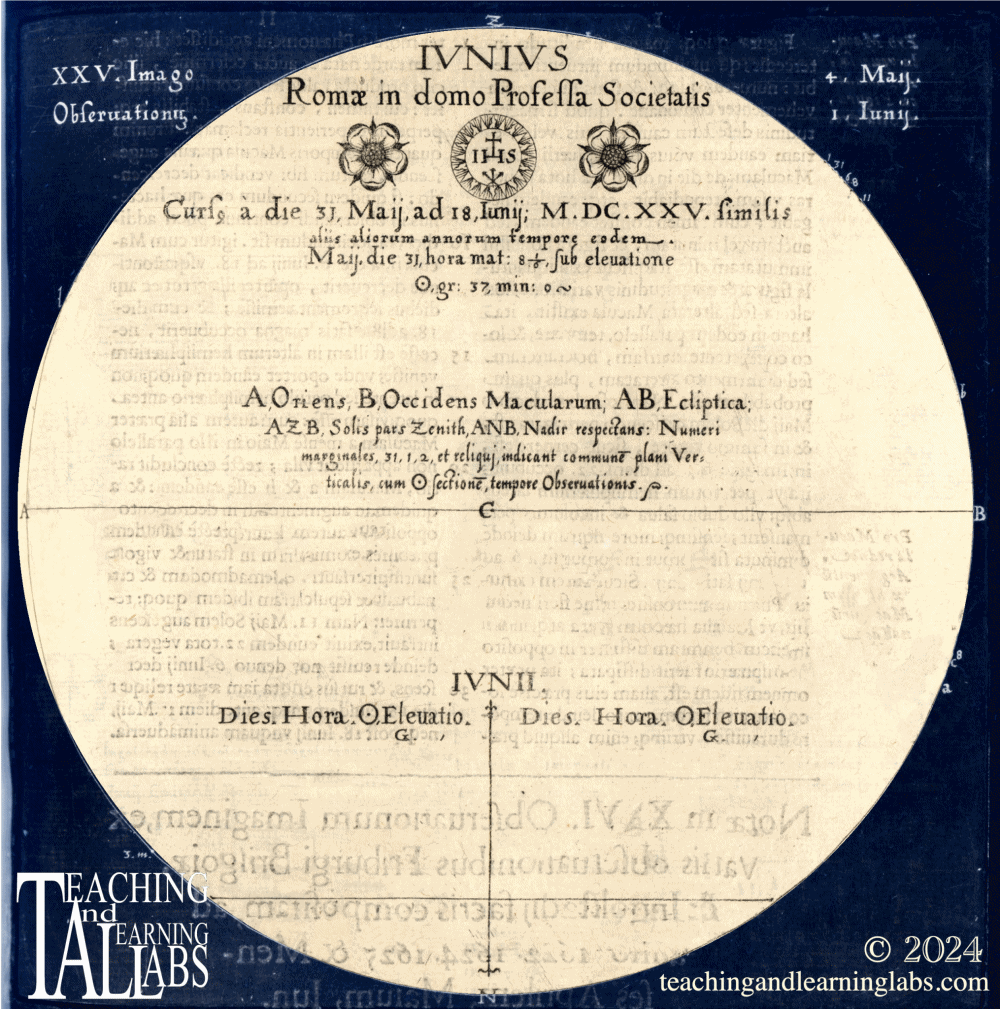Rosa Ursina is a book written by Christoph Scheiner (who also invented the pantograph in 1603, and documented a rare display of ice haloes, seen from Rome in 1630). It documents the observations of a group of Jesuit priests, using telescopes to observe the sun (following his own observations, which he began in 1611).
"Rosa orsina (since it is dedicated to an Orsini), or about the Sun, which shows itself to be changeable thanks to the wonderful phenomenon of its flares and spots, and also rotates in the course of a year along a fixed axis from west to east around its own midpoint and completes a revolution along an axis, which can move because of its poles, from east to west in just under a month."

©2024 TeachingAndLearningLabs.com
The above animation, based on this image (the 25th of 70 images of the sun from December 1624 through June 1627, each of which could be turned into a similar animation) shows the sun from May 31 through June 18, 1625. It was made using telescopic eyepiece projection, as in these images.
These observations remained the most comprehensive and detailed for over a century. This was likely caused, in part, by the Maunder Minimum - a period from around 1645 through 1715 when sunspots were rare.
Since there have been several large sunspot groups recently (May 2024), you can see them yourself by pulling out your eclipse glasses, or using any of the other methods described on our Safe Sun Viewer page (which also refers to an image from the Rosa Ursina).
Or, keep an eye on solar activity at solarham.com, Helioviewer.org, and Data from the Solar Dynamics Observatory.
The following animation using data from the Solar Dynamics Observatory also covers 19 days, from May 1-19, 2024. It includes one of the largest, most active sunspot groups in recent years.

Several of the other diagrams in the Rosa Ursina are from similarly active months. Those would be harder to animate (and, I'm sure, were harder to draw while still showing overlapping segments from separate days).